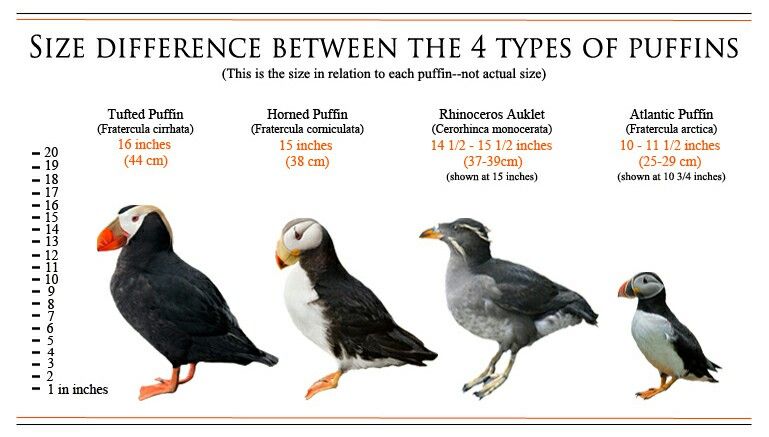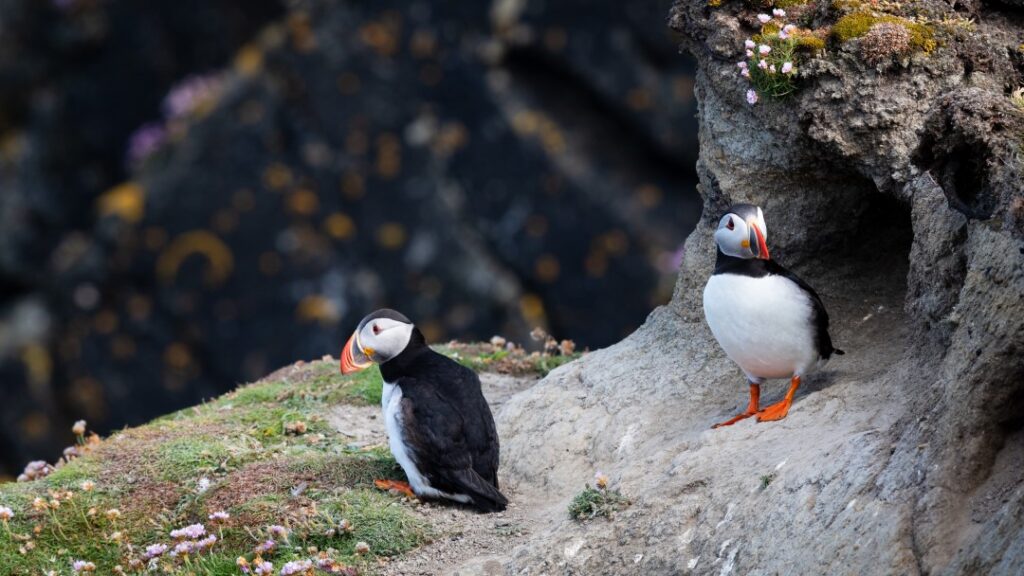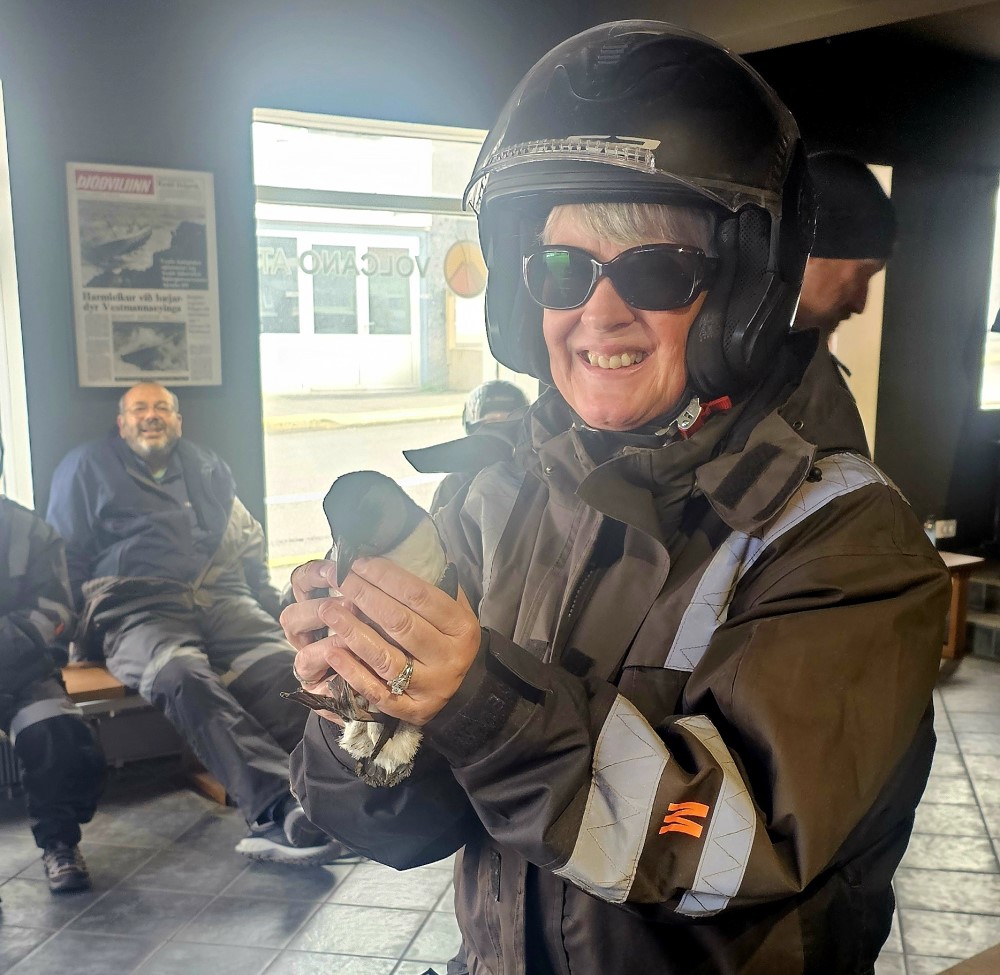Your Guide to Puffin Spotting in the Westman Islands
If you’re planning a road trip along Iceland’s southern coast or looping the country’s ring road, then you should definitely consider hopping on a ferry to the Westman Islands. One of the most compelling reasons to do so in the summer months is to see the archipelago’s puffin colony. If that sounds like something you’re interested in, why not take a look at our guide to puffin spotting in the Westman Islands?
Atlantic puffins
There are four species of puffins on our planet. Though they are all found in the northern hemisphere, only one lives in Atlantic waters. That’s the puffin we see in Iceland, whose Latin name is Fratercula arctica. They vary in appearance a little, but these different birds have a lot in common. For instance, they all raise a single chick at a time and you’ll see them carrying fish in their beaks when that chick needs a meal.
In comparison with horned and tufted puffins, the Atlantic variety is relatively small in size. It has a fabulous multi-coloured beak, black and white plumage and bold orange feet. The bird is stout in appearance, with wings that seem too little for the job they need to do. This means that to stay airborne, the puffin flaps its wings very fast, up to 400 times a minute, achieving impressive speeds of up to 55 miles per hour in the process.

When they land, puffins can look a bit clumsy, giving them the nickname “clowns of the sea”. Yet underwater, they move much more gracefully. Accomplished swimmers, they can dive up to 60 metres deep in search of fish, emerging with a beak full of tiny fish. Puffins like to eat capelin, herring and sand eels.
The seasonal lifestyle of puffins
Puffins actually spend about eight months of the year out in open water and from late August to late April you are unlikely to see them on land. In the Westman Islands, those that can’t make the journey are looked after in a dedicated section of the Beluga Whale Sanctuary beside the harbour in Heimaey.
During the winter months, puffins swim and rest on the sea. At this time, they actually look very different. The beak is not as colourful and instead of the black markings around their eyes that give them their cute, almost sorrowful appearance, their faces can be dark all over. When they’re on the ocean, puffins go their separate ways.
Nesting, breeding and rearing their chicks
During late spring and summer things get interesting, especially if we look at puffins from a visitor perspective. This is the period during which they are found on land or very close to shore, which means this is when we are most likely to encounter them. Like tourists, they arrive in Iceland on a temporary basis, though they have a different purpose in mind.
When the puffins return to land they regain their vibrant colouring and use it to attract a mate. In fact, puffins are monogamous – they reunite with the same mate they were with the previous summer so that they can rear a new chick together. This can go on for years as the Atlantic puffin has a lifespan of around 20 to 25 years.

The burrows on Iceland’s cliff faces and on the tops of headlands make the perfect base for them to raise their chicks. The male puffins use their claws and beak to dig out a burrow in which they will be able to rear a chick. It has to be clean enough for the female to decide she is happy to use it.
Each one measures around 1.2 metres long and has two “rooms” – one is for raising their young and for sleeping while the other is used as a toileting area. Once the chick arrives, the puffins will take it in turn to feed it and look after it – joint parenting is the norm. Eventually, the chick will fledge and, their work successfully concluded, the puffins can return to the sea.
Why is the Westman Islands the ideal place to go puffin spotting?
Puffins can be seen in many different locations all along the Icelandic coast, but the Westman Islands has the most of any place. The colony here has an estimated 830,000 breeding pairs, far in excess of anywhere else the Atlantic puffin is found. This is what makes puffin spotting here such a pleasure, as even during the day there’s usually something to watch.
There are places both on land and offshore where they are easy to sight, so whether you want to see them flying over the water or coming in to land on a cliff, you should be in luck. If you’re keen to see them make their clumsy landings, then a hike up to Stórhöfði is one option. It’s a long walk from the harbour, so opting for a tour is often preferable.
How and where to see puffins in the Westman Islands
- Hike
There’s a bird hide up at Stórhöfði, which is the peninsula at the southern side of Heimaey Island. There are a few parking spaces available a few steps away, and space inside for a group of people to peer out of its small windows. It’s best to get there early or late in the day and you may need some patience as you wait.
- ATV tours
Stórhöfði is one of the stops on our popular puffin-themed ATV tours, so you can save yourself a lengthy walk and have some fun on an exhilarating ATV ride in the process. You’ll stop to learn more about the Westman Islands and its volcanic and pirate history, so though you might at first think that the ATV ride is just a fun adventure, it’s far more rewarding and memorable than that.

- Boat trips
Another option is to book a boat trip. You can loop the archipelago in a rigid inflatable or larger boat. The boats get as close as they safely can to the cliffs that are teeming with seabirds, and you’ll also see the puffins flying over the water. It’s worth bringing a pair of binoculars so you can best appreciate what’s happening in front of you.
The Puffling Parade and Heimaey’s puffin rescue centre
Not all breeding experiences go according to plan. Sometimes, when the puffins are leaving the island, the recently fledged chicks get confused by the town’s lights. Instead of flying off out to sea as planned, they are found wandering around and disorientated. Locals gather them up and return them to the coastal cliffs where they release them, ensuring they know which way to fly.
A handful of puffins never make it back to the ocean. Some might be injured or have oil on their wings. The good news is that there’s a puffin rescue centre within the Beluga Whale Sanctuary at the harbour on Heimaey. Staff members clean them up and nurse them back to good health ready for them to be released back into the wild. Nine remain at the centre; some are visually impaired and one has a leg injury that can’t be fixed. You can visit them year-round (days and times vary) and if you form a bond, adoption support is welcome.